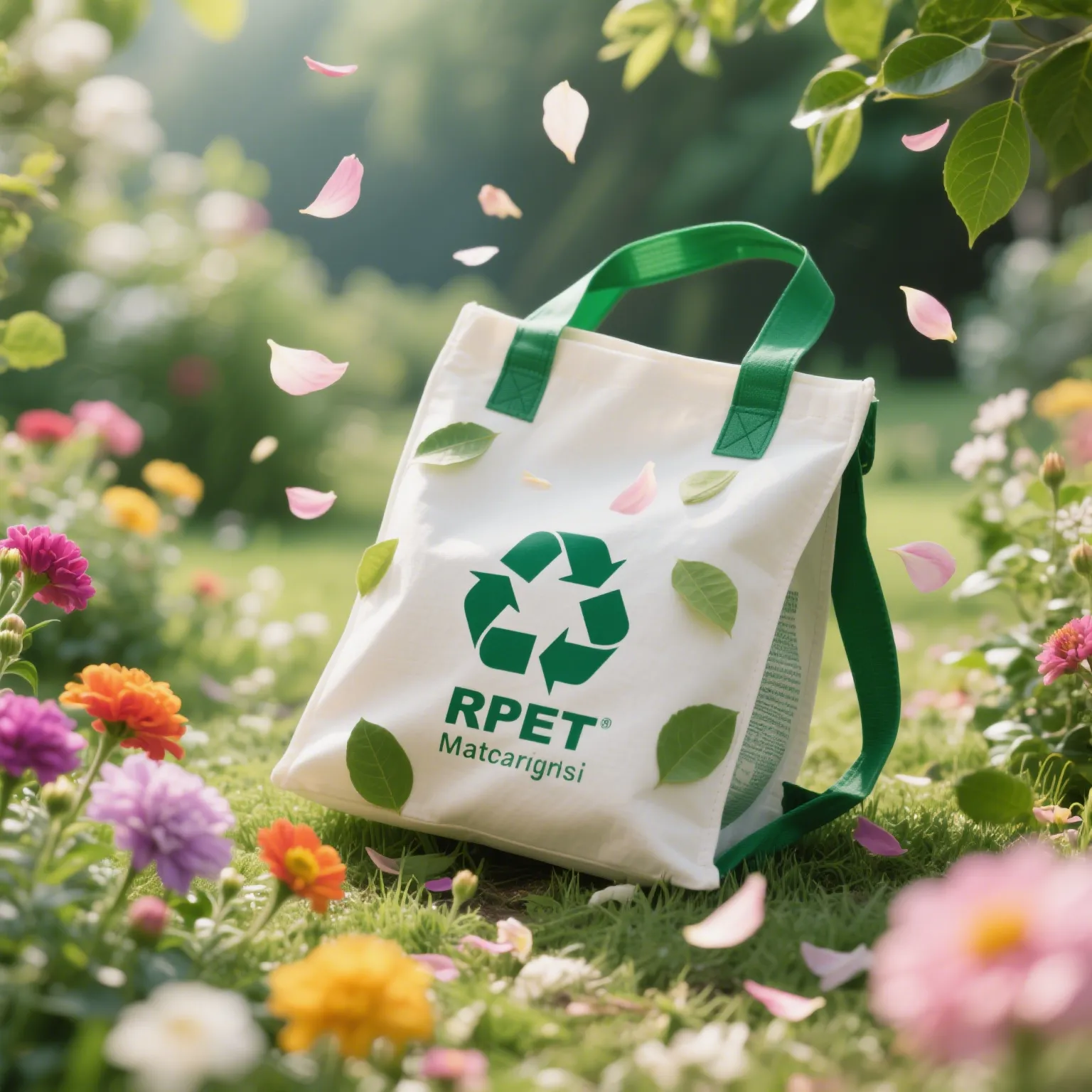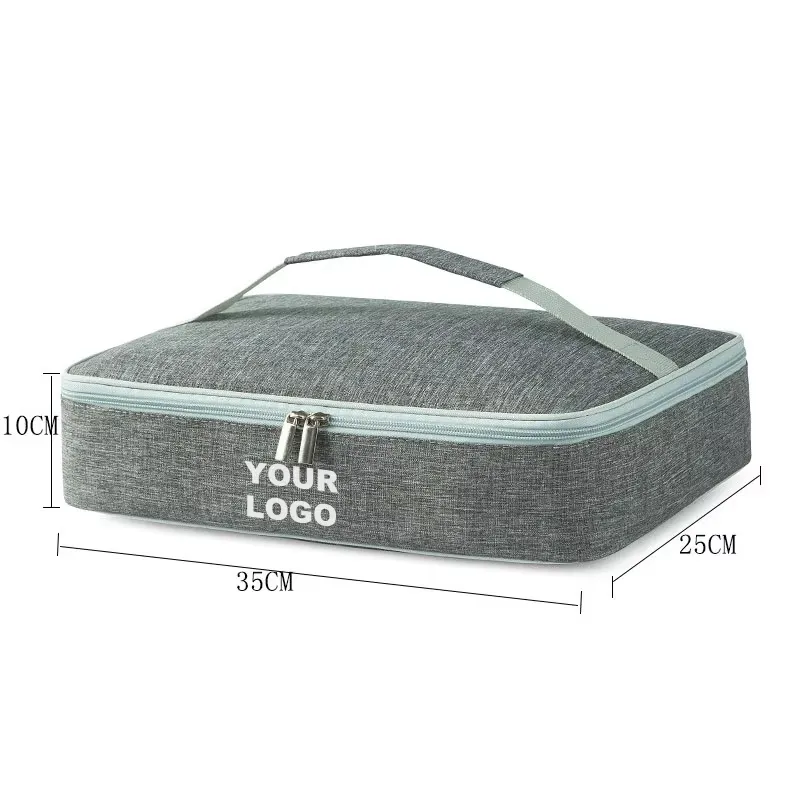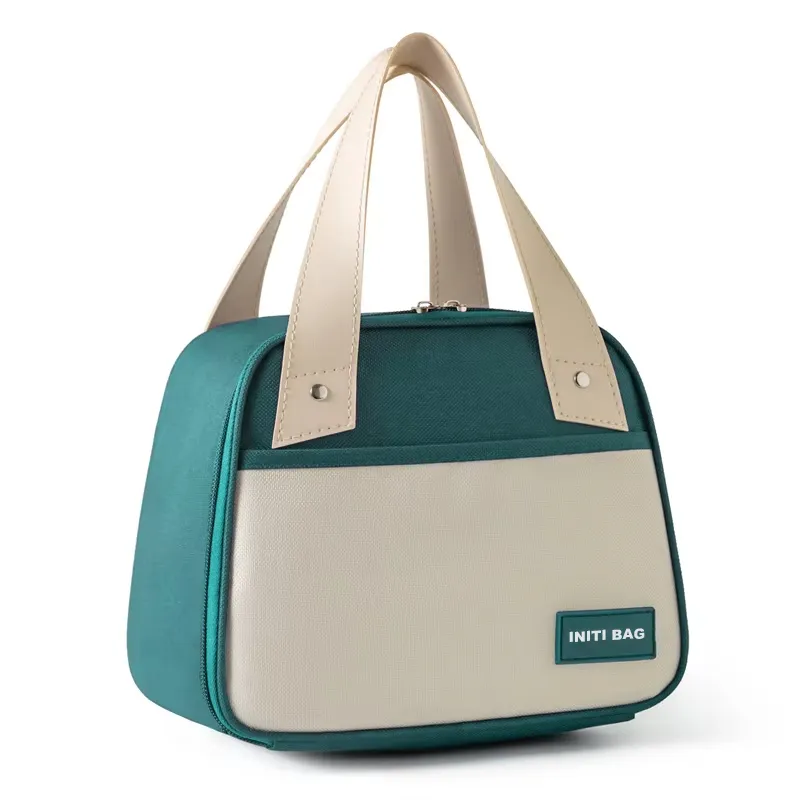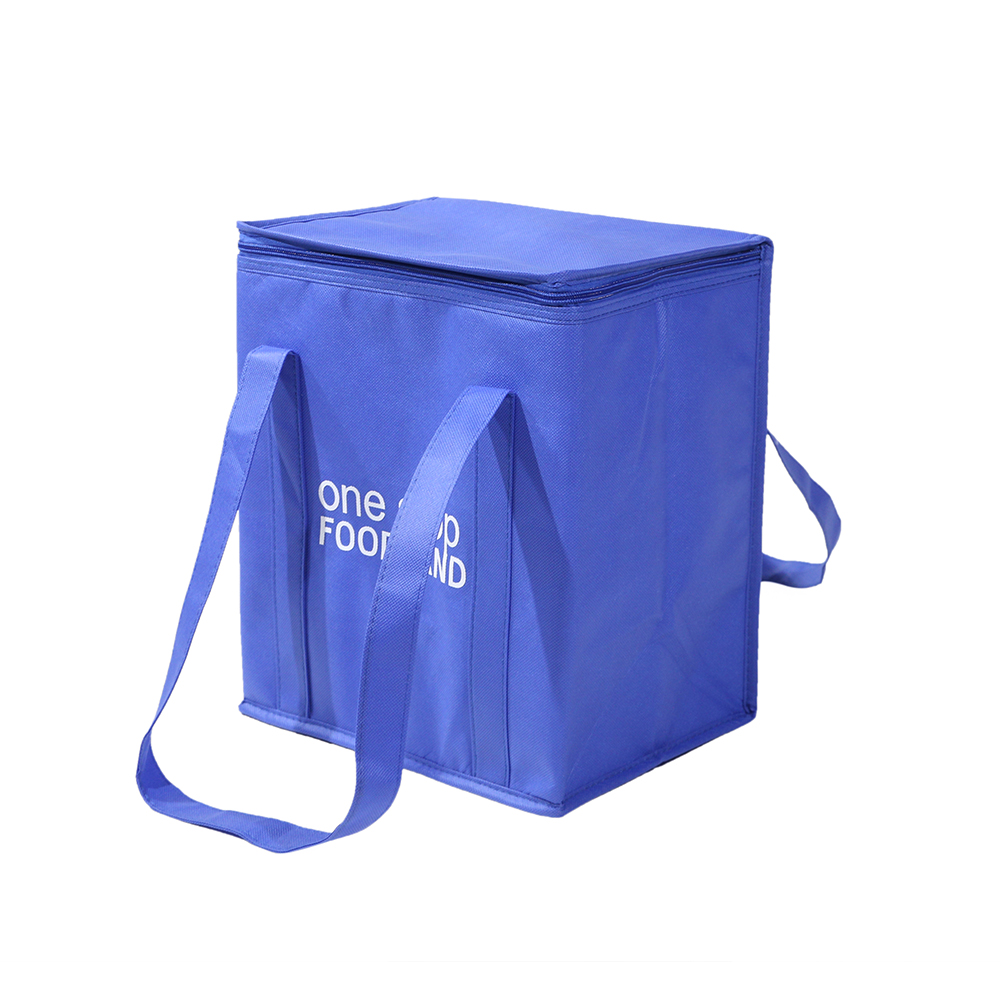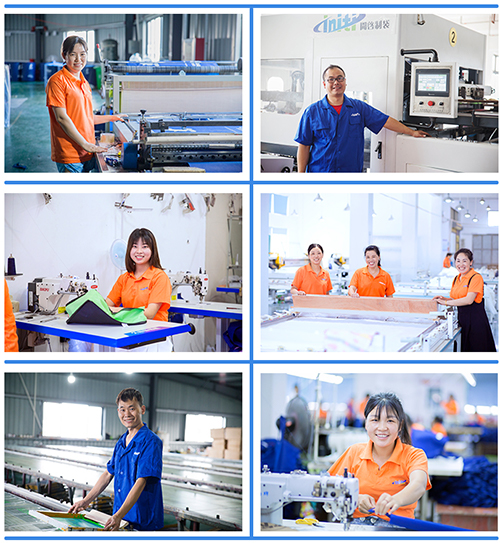What to Look for When Sourcing Wholesale Insulated Bags?
Let's Start Here
Today, whether it's food delivery, grocery shopping, or corporate gifting, insulated cooler bags have become a must-have.
If you're planning to source wholesale insulated bags, choosing the right ones isn’t just a matter of convenience — it can actually make or break your product quality, brand image, and customer satisfaction.
But where do you start?
Don't worry — let's walk through everything you need to know!
1. First Things First: Get the Materials Right
Before you dive into logos, colors, or cool designs, start by looking at the materials.
The fabric you choose affects not only how the bag looks but also its durability, weight, and most importantly — its thermal performance.
Here’s a quick rundown of the common materials you’ll encounter:
PEVA (Polyethylene Vinyl Acetate): Lightweight, flexible, waterproof, and a more eco-friendly option compared to PVC. Great for light loads, but not the best for heavy-duty use.
Aluminum Foil Lining: Fantastic for heat and cold reflection, but a little prone to punctures. Higher cost compared to basic options.
Non-Woven Polypropylene: Affordable and recyclable. Perfect for lightweight grocery totes or promotional giveaways.
Polyester + Foam: Highly durable and reusable. A bit bulkier, but it’s the go-to for heavy grocery delivery and pharmaceutical cold chain transport.
Pro Tip: Always ask — is it food-grade? Is it waterproof? Is it tear-resistant?
Because let’s face it — if the bag falls apart or leaks, your brand image takes a hit, too.
| Material | Pros | Cons | Best For |
| PEVA | Eco-friendly, waterproof, lightweight | Less durable for heavy loads | Short-distance food delivery |
| Aluminum Foil | Superior insulation | Prone to punctures, pricier | Catering, takeaway orders |
| Non-Woven Fabric | Affordable, recyclable | Weak moisture resistance | Promotional campaigns |
| Polyester + Foam | Super durable, reusable | Bulky, higher MOQs | Grocery, pharma deliveries |
2. Let’s Talk About Insulation — Because That’s the Whole Point
Sure, a bag might look fancy on the outside — but if it can’t keep things cold (or hot), what's the point?
Here’s what matters when it comes to insulation:
Multi-layer Construction: Look for at least three layers — tough outer fabric, a solid insulation core (like foam), and an effective inner lining (such as PEVA or aluminum foil).
Foam Thickness: Generally, the thicker the foam (5mm and up), the better the insulation.
Closure Systems: Secure zippers, Velcro flaps, or magnetic closures really help minimize temperature loss.
Pro Tip: Ask for real-world testing data from your supplier.
How long can the bag maintain a temperature below 5°C (41°F) or above 60°C (140°F)?
What were the testing conditions?
Especially if you’re delivering meal kits, groceries, or frozen items — good insulation isn’t a luxury, it’s a must.
3. Size (and Shape) Actually Matter
When it comes to cooler bags, one size definitely does not fit all.
Make sure your supplier offers a variety of size options:
Small (5L–10L): Ideal for a single meal, lunchboxes, or lightweight promotional gifts.
Medium (15L–25L): Perfect for everyday grocery runs or catering deliveries.
Large (30L and up): Designed for big family grocery trips or bulk catering needs.
Quick Tip: Pay attention to dimensions, not just volume.
A tall, narrow bag and a short, wide bag might both hold 20 liters — but they'll fit very different products.
Need something specific for your business? Make sure your supplier can handle custom sizing too.
4. Customization: Your Brand's Best Friend
A well-made insulated bag isn’t just practical — it's a rolling billboard for your brand.
Here’s what you can customize:
Full-color logo printing (silkscreen, heat transfer, sublimation, embroidery)
Zippers, labels, and even customized packaging
Special colors or patterns that match your brand vibe
Branding Tip: Always request a sample with your logo before committing to bulk production.
It’s the only way to be sure your brand looks as good on the bag as it does on your website!
Good branding sticks around — literally. Durable prints that don’t peel or fade turn every customer into a long-term advertiser for you.
5. Don't Overlook Safety and Certifications
If your bags will carry groceries, meal kits, or anything that touches food, safety standards are critical.
Here’s what you should be checking:
FDA Certification (for the U.S.): Confirms materials are food-safe.
LFGB Certification (for Europe): Ensures no harmful chemicals migrate into food.
BPA-Free Materials: Essential for customer health and peace of mind.
Other good-to-have certifications:
ISO 9001 (for quality management)
REACH Compliance (European chemical safety standards)
Pro Tip: Highlight these certifications in your marketing materials!
They reassure customers and boost your brand’s credibility.
6. Understand MOQs and Pricing Early
Minimum Order Quantities (MOQs) vary a lot depending on the supplier and customization level:
For stock, off-the-shelf insulated bags: MOQs can be as low as 300 units.
For full custom designs (custom fabrics, colors, etc.): expect MOQs starting around 500–1000 units.
Key questions to ask up front:
Are sample costs refundable?
Is there a setup fee for printing or embroidery?
Are there bulk order discounts?
Trust us — clear communication about costs early on will save you major headaches later.
7. Choosing the Right Supplier is Half the Battle
Even the best bag design won’t save you if your supplier is unreliable.
When evaluating suppliers, look for:
Experience: 5+ years in manufacturing insulated bags is a good benchmark.
Production Capacity: Can they handle urgent orders or scale with your business?
Communication: Fast, clear responses show they care about your business.
Quality Control: Do they offer internal and third-party inspections?
What to Ask For:
Factory audit reports (BSCI, Sedex certifications)
Client references or case studies
Production videos or physical samples
A strong supplier relationship is like a secret weapon for growing your business sustainably.
8. Eco-Friendly Options: Good for the Planet, Great for Business
More consumers — especially Millennials and Gen Z — expect brands to care about sustainability.
Offering eco-friendly insulated bags isn’t just nice anymore; it’s often a deciding factor.
Here are some greener options you can offer:
RPET Fabric: Made from recycled plastic bottles.
Biodegradable Insulation Foams: Still provide great insulation without harming the environment.
Reusable, Washable Designs: Encourage repeat use and reduce waste.
Marketing Tip:
Tagging your bags as "eco-friendly" can win major points with environmentally conscious customers — including corporate clients who prioritize sustainability in their supply chains.
Quick FAQs About Wholesale Insulated Bags
Q1: How long can a quality cooler bag maintain temperature?
Typically, up to 6 hours under normal conditions. Adding ice packs can extend this further.
Q2: What’s the difference between aluminum foil lining and PEVA lining?
Aluminum foil reflects heat/cold better and maintains temperature longer. PEVA is softer, more flexible, and more eco-friendly, but provides slightly less insulation.
Q3: Can I fully customize my wholesale insulated bags?
Absolutely! Size, shape, insulation thickness, design, features like bottle holders or side pockets — all can be customized. Just be aware of MOQ requirements.
Q4: Are eco-friendly insulated bags as durable as traditional ones?
Yes — many RPET bags and biodegradable options match or even outperform traditional materials in durability.
Q5: How can I verify a supplier’s reliability before a big order?
Request samples, factory certifications, client testimonials, and if possible, arrange a third-party inspection before shipment.
Q6: What printing method is best for cooler bags?
Simple designs: Silkscreen printing
Full-color designs: Heat transfer or sublimation
Premium branding: Embroidery
Q7: What's a reasonable lead time for wholesale cooler bag orders?
Stock items with basic customization: around 2–4 weeks.
Fully customized designs: typically 6–8 weeks, including production and shipping.
Final Thoughts
At the end of the day, sourcing the right wholesale insulated bags is about striking the perfect balance:
Practical performance | Strong branding | Reliable supply | Eco-friendly appeal
By doing your homework and partnering with the right supplier, you’ll not only deliver better products — you’ll also grow your brand in a way that customers will love (and remember).
Whether you’re supplying grocery chains, delivery services, or corporate gifting campaigns, investing in the right cooler bags makes a world of difference.
Hot Tags:Shopping Bag,corduroy bag,China, suppliers, manufacturers, factory, wholesale, in bulk, for sale,tote bag ideas,canvas bags for storage,cotton shoulder bag, rpet bag, custom garment bags,canvas drawstring bags,Insulated lunch cooler bag,makeup cosmetic bag for sale,Grocery and Shopping tote bag,Beach Accessories,Jute/hemp/burlap tote bag,Corduroy tote bag,Travel bag,Linen bag,Paper bag







